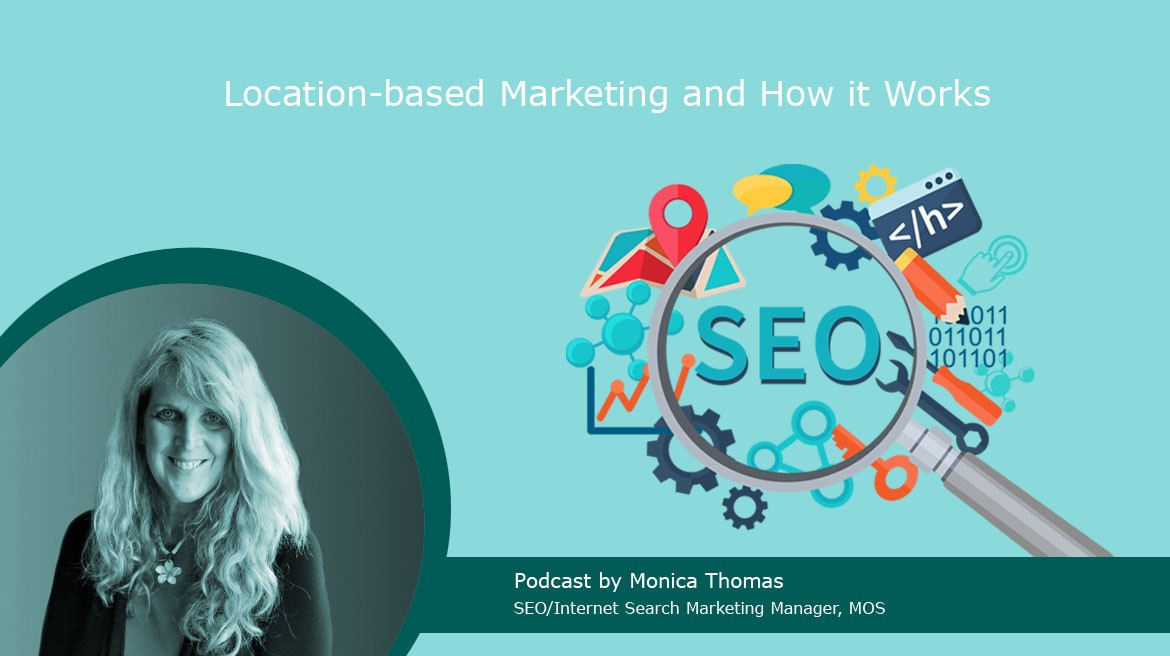This week’s “Five Minute SEO” podcast will cover the major components of Location-based Marketing and How it Works.
Though not a new concept, location-based marketing is getting more relevant, mainly for local businesses of any type, to reach the right customers. Location-based advertising is tailored to consumers in a specific place.
Listen to the Podcast now!
Read Transcript
Hello –
This is Monica Thomas the Search Marketing/SEO manager for medresponsive.com
Read Transcript
Hello –
This is Monica Thomas the Search Marketing/SEO manager for medresponsive.com
This week’s “Five Minute SEO” podcast will cover the major components of Location-based Marketing and How it Works.
Though not a new concept, location-based marketing is getting more relevant, mainly for local businesses of any type, to reach the right customers. Location-based advertising is tailored to consumers in a specific place. Most businesses benefit from reaching the audiences that visit their own locations, as well as competitive locations. Google search Ads play a key role in digital marketing for healthcare or for any business. Reaching local consumers is now easier with local targeted campaigns.
According to the survey report from Factual, with location ads:
Properly targeted ads based on the consumer’s location are almost certain to be more relevant and therefore much less likely to be blocked or ignored.
Location-based ads can:
Help you to know your target audience
- Complement your other marketing strategies
- Help marketers to personalize experiences for customers
- Deepen your connection with consumers
- Help to measure offline effects of digital ads
- Increase your brand visibility
- Showcase positive reviews and ratings
- Increase your return on investment (ROI)
Personalized ads present an opportunity for advertisers to personalize their messages for people based on their current location, in real time. For instance, if someone is walking through New York City and they see a mobile ad specific to New York City, they are much more likely to pay attention.
Here are some tips for creating location based ads:
- Don’t just advertise something generic
- Include a call to action in ads
- Use multiple platforms – Google AdWords, Facebook ads, Instagram ads etc.
- Consider context and intent – healthcare is not just a business
- Focus on the target audience – ads must be relevant to their needs
- Analyze to effectively understand consumer behavior
Location-based Marketing Types
There are key types of location-based marketing/advertising including the following:
Behavioral targeting
Advertisers can display relevant ads and marketing messages to users based on their web-browsing behavior.
Geofencing
Another type of location-based marketing is Geofencing. When it comes to geofencing, marketers refer to a location or certain locations where an audience visits, so that they can serve them with real-time ads and content.
Radius targeting
Almost like geofencing, radius targeting is putting a radius around a certain address, city or state to specify the location that your ads will be triggered.
Researching and understanding how to devise your location-based marketing plan for your& business can often be tricky and time-consuming. The SEO, Web Design, IT and Search Marketing team here at MedResponsive can help you with any of your location-based marketing, SEO, Google advertising, web design or internet marketing needs. Please contact us via phone or email with any questions. Have a great day or evening! Thank you for listening!

